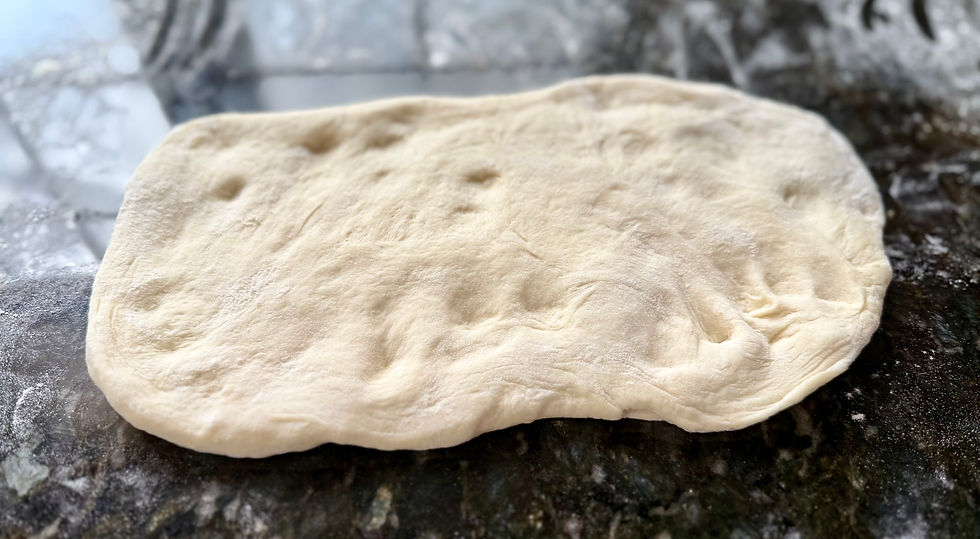Cuban Bread (Pan Cubano)
- yandwkitchen
- Apr 13
- 3 min read

Cuban bread, or Pan Cubano, is a treasured staple in Cuban cuisine, celebrated for its soft, airy texture and crispy crust. It also serves as the foundation for our Cubano sandwich recipe. If you don't have regular access to this delicious bread, you're in luck because it is as easy to make as it is to enjoy. If the idea of working with yeast scares you, this is a great jumping off point.
The Origins of Cuban Bread
Cuban bread is part of the rich cultural tapestry of Cuba. Introduced by Spanish immigrants, it blends elements of Spanish and Caribbean cooking, making it unique. The traditional recipe consists of a soft white dough made from flour, water, salt, and yeast, enhanced with sugar and fat. Traditionally, lard is used to add richness to the bread, but you can use vegetable shortening in its place.
Making Cuban bread at home is a rewarding experience so let's get started!
What you'll need:
Bread flour (all-purpose also works)
Sugar
Salt
Fast-acting (instant) dry yeast
Lard or vegetable shortening
Parchment paper
2 Jellyroll pans or cookie sheets (11 x 17 inch)

Activate the Yeast: In a small bowl, mix warm water, sugar, and yeast. Let it sit for about 10 minutes until it becomes foamy.
Combine Ingredients: In a large bowl, mix the flour and salt. Add the activated yeast mixture and melted lard and stir it until it becomes shaggy. It will not be well combined yet (see photo).
Knead the Dough: Turn shaggy mixture out onto a floured surface and knead until a dough forms, roughly 10 minutes, until smooth and elastic.

First Rise: Transfer the dough to a greased bowl, cover it with a cloth, and let it rise in a warm area for about 1-2 hours, or until it doubles in size.

Shaping and Prepping the Loaves: Turn the dough out of the onto a lightly floured surface and punch down the dough. It's ok if it deflates, you want that. It will rise again when shaped into loaves. Divide it into two equal portions and shape into each into a rectangular shape, about 15-16 inches when measured on the long edge. Starting with one of the long sides, roll it tightly into a loaf and pinch the ends and long seam to a seal. Using the palms of your hand, roll the loaf out slightly until it reaches between 17-18 inches long.


Second Rise: After lining each cookie sheet with parchment paper, place each loaf diagonally seam side down on its own cookie sheet. Cover loosely with plastic wrap and allow to proof a second time for approximately one hour.
Preheating Oven: Place a cast-iron pan on the bottom of your oven, if flat, otherwise place it on the lowest oven shelf. Preheat your oven to 425°F. Position other racks evenly to allow each loaf to have room in the oven for air circulation.

Baking: Once the second proof is done, remove plastic wrap. Gently slit the top of each loaf with a sharp knife. This slit doesn't need to be deep - we just want to allow the bread to expand while baking without rupturing. This next step should be done as quickly as is safely possible. Once oven temp is reached, open oven and add two cups of hot water to the cast iron pan. It will instantly start to steam. Add each loaf to the oven and close the door quickly. Ovens can vary but we baked ours for about 20-25 minutes until they are golden brown and sound hollow when tapped.
Cool: Let the loaves cool on a wire rack before slicing.

Cuban bread's versatility and mild flavor makes it a suitable base for any sandwich or simply with some butter and jam.
Cubano Sandwiches
One of the most famous uses for Cuban bread is in the iconic Cuban sandwich. Stacked with roasted mojo pork, ham, pickles, Swiss cheese, and mustard, this sandwich is not just a meal— it's an experience. The crusty exterior of the bread holds up beautifully against the rich fillings, allowing each bite to deliver layers of flavor.

We have rarely met a bread that we haven't loved, and this one is no exception. As always, we would love to hear from you once you try this recipe and will respond to any questions or feedback you have. Thanks for being here. xo Yaya and Wuelo.





Comments